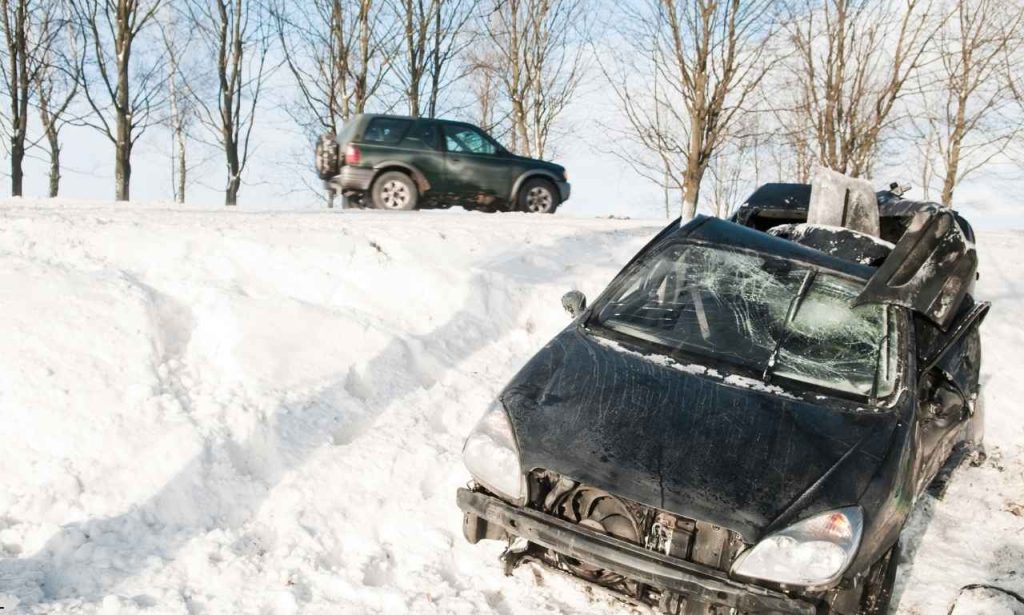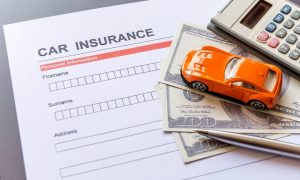Winter roads are not forgiving. Cold air creeps into engines, ice coats bridges, and snow blinds even the most careful drivers. A short trip to the store suddenly feels like a survival test. The tiniest error can snowball into a major accident. The 5 Most Common Causes of Winter Car Accidents appear every year, repeating like clockwork. They are not mysterious, but they still catch drivers off guard. Knowing them helps you prepare, and preparation makes all the difference. Let’s examine these dangers one by one and explore why they matter.
Visibility Issues

Winter’s first strike is usually poor visibility. Snow falls, fog rolls in, and headlights turn into glowing halos instead of guides. Even a quick flurry can erase lane markings in seconds. That’s when nerves set in.
Why Visibility Matters So Much
If you can’t see, you can’t react. Simple as that. Tail lights disappear into a white blur, and brake lights flash too late. One wrong guess, and you’re sliding toward a car you didn’t notice. Technology helps, but cameras and sensors freeze or get covered in grime. When the road disappears, no gadget can magically restore it.
Equipment and Habits
Working headlights, good wipers, and washer fluid sound obvious. Yet countless accidents happen because drivers skip these basics. Wipers smear instead of clearing, fluid nozzles freeze, and headlights stay coated in salt. A ten-second check before leaving could save a life, but many shrug it off. That’s the human element—people assume “it’ll be fine.” Winter proves them wrong.
A Common Situation
Picture this: you’re driving home, snow falling harder by the minute. The car ahead suddenly brakes, but you barely see it. By the time your foot hits the pedal, the stopping distance has vanished. That’s how dozens of chain-reaction crashes unfold on winter highways. Poor visibility doesn’t just make driving stressful; it sets the stage for collisions.
And here’s the kicker—visibility issues don’t only happen during storms. Glare from low winter sun can blind drivers just as effectively. Snowbanks reflect sunlight directly into windshields, creating sharp flashes that make eyes water. Drivers often underestimate this effect until it’s too late.
Tailgating
Tailgating is a year-round headache, but in winter it’s downright reckless. Too many drivers forget that stopping distance doubles on slick pavement. What looks like a safe gap in July becomes dangerous in December.
Why Stopping Distance Matters
Brakes need traction, and traction vanishes when roads glaze with snow or ice. On icy asphalt, even anti-lock systems struggle. Cars don’t stop; they slide. A driver who leaves two seconds of space in winter might as well be glued to the bumper ahead.
The Psychology of Tailgating
Impatience drives this bad habit. Holiday shoppers rush. Commuters push to make up lost time. Some drivers even believe their SUV or all-wheel-drive gives them special permission. It doesn’t. Extra horsepower won’t change physics when your tires hit black ice. That false confidence is why tailgating stays one of winter’s worst sins.
Real-World Scene
Imagine bumper-to-bumper traffic near a busy exit. One car taps the brakes. The car behind has a chance. The tailgater two cars back? No chance at all. Metal crunches, horns blare, and traffic clogs for hours. The accident wasn’t bad luck. It was preventable with an extra second or two of space.
And here’s the irony—slowing down by a few miles per hour barely changes arrival times. Yet giving up that tiny slice of time could mean avoiding a smashed fender and a hospital bill.
Mechanical Decline
Cold weather exposes every weakness in a vehicle. What seemed fine in October may fail by January. Cars don’t just age; they suffer under winter’s pressure.
Systems Most at Risk
Batteries lose half their strength when temperatures plunge. That “almost fine” battery from last month suddenly leaves you stranded. Tire pressure drops with every cold snap, reducing grip just when you need it most. Brakes wear faster if pads are thin, and fluids thicken in the cold. Winter magnifies small problems until they cause accidents.
Preventive Care
Routine maintenance before winter isn’t a luxury—it’s a shield. Checking tire tread, topping fluids, and testing batteries keeps cars roadworthy. Skipping service often leads to mid-storm breakdowns. And a stalled car in a snowstorm isn’t just inconvenient; it’s dangerous for everyone on the road.
A Telling Example
Think of a car with worn brake pads. On dry pavement, it manages. On icy streets, it doesn’t stop soon enough. The vehicle slides through an intersection, colliding with traffic that had the green light. That crash didn’t come from fate; it came from neglect. Mechanical decline punishes complacency every winter.
Drivers sometimes believe modern cars “warn” them before something critical fails. In reality, problems like low tire tread or corroded brake lines show little warning. Winter exposes them brutally.
Icy Conditions
Ask any driver what scares them most about winter, and many will say “ice.” They’re right. Ice is sneaky, cruel, and often invisible.
The Nature of Ice
Snow gives some warning. Ice does not. Black ice blends into asphalt, waiting on bridges, curves, and shaded stretches. You don’t know it’s there until you’re sliding. And once a car loses grip, even skilled drivers struggle to recover.
Tires and Technique
Winter tires change the odds. Their softer rubber grips where summer tires fail miserably. But let’s be clear: no tire beats pure ice. Slowing down, steering gently, and braking lightly are the real defenses. Drivers who ignore this lesson often end up facing the ditch—or worse.
Familiar Story
Picture dawn on a rural bridge. The pavement looks dry, but last night’s freeze left it slick. A car hits the patch, skids sideways, and spins into oncoming traffic. That’s the nightmare of black ice. It doesn’t announce itself. It just waits. Respecting icy conditions is the only way to avoid becoming another statistic.
And here’s another twist—ice often lingers where drivers least expect it. Shaded corners and overpasses freeze long after the sun melts open highways. Drivers let their guard down, and that’s when accidents happen.
Hydroplaning
Most people think hydroplaning belongs to rainy summers. Winter proves otherwise. Melting snow mixes with road salt and grime, forming deep slush. Tires ride over it, losing contact with the pavement. The steering wheel feels like it’s not connected anymore. That floating feeling? That’s hydroplaning.
Why It Happens
Hydroplaning starts when water or slush builds faster than tires can clear it. Even at 35 mph, it’s possible. Uneven tire wear makes it worse. One moment you’re in control, the next you’re sliding across a lane. Slush may look harmless, but it creates chaos.
The Fallout
Hydroplaning sends cars into guardrails, ditches, and intersections. Drivers panic, yank the wheel, or slam brakes—all mistakes that worsen the skid. Winter crashes from slush happen on highways and side streets alike. Anyone who shrugs it off risks finding out the hard way.
Defense Tactics
Slowing down works. Avoiding puddles helps. Keeping tires inflated and rotated makes a difference. Hydroplaning isn’t only about rainstorms—it thrives in winter thaws. Knowing this gives you a fighting chance to stay upright when the slush builds up.
Another overlooked factor is heavy trucks. They throw slush behind them, creating surprise puddles that smaller cars plow into. Staying clear of their spray zone significantly reduces the risk.
Conclusion
Winter driving is never just about snowflakes drifting down. It’s about visibility disappearing, space shrinking, cars failing, ice hiding, and slush turning into liquid traps. Each hazard feeds the others, creating perfect conditions for disaster.
The 5 Most Common Causes of Winter Car Accidents—visibility issues, tailgating, mechanical decline, icy roads, and hydroplaning—aren’t new. They appear every year, yet drivers underestimate them again and again. The good news? Every single one is manageable. Maintain your vehicle, give extra space, and respect conditions. Winter doesn’t have to win.
Also Read: How to Handle a Tire Blowout
FAQs
Icy roads remain the biggest culprit. Black ice creates sudden loss of control and countless crashes.
Yes. They shorten stopping distances and improve grip on snow and ice.
Clean headlights, replace wipers, and use cold-resistant washer fluid.
Stopping distances are longer. Close following leaves no reaction time.




